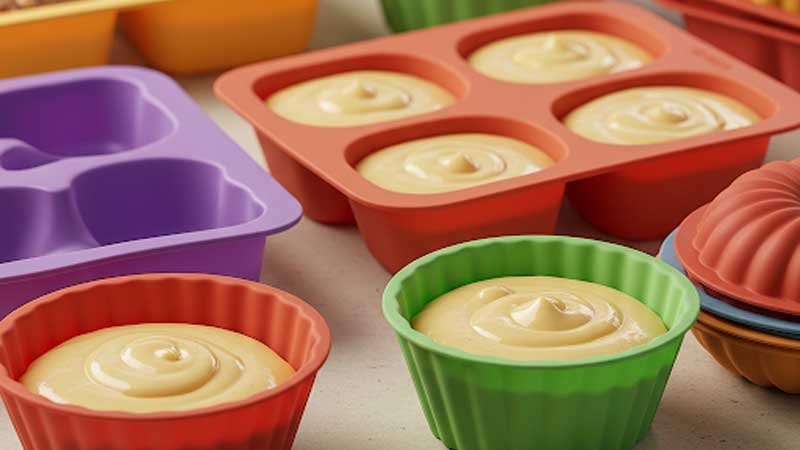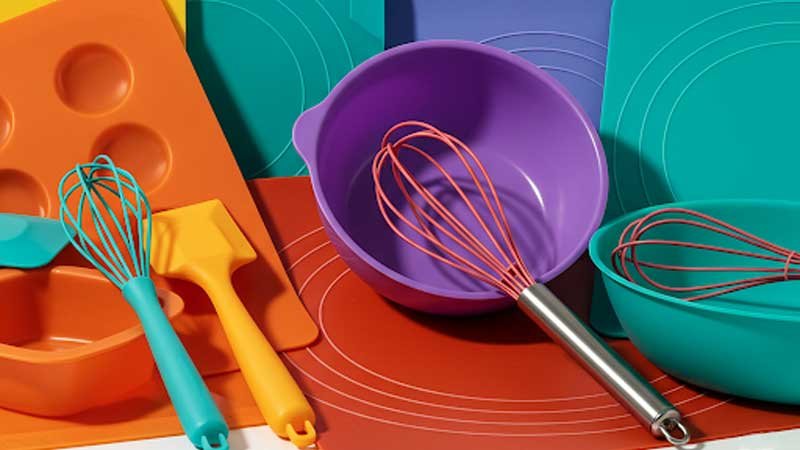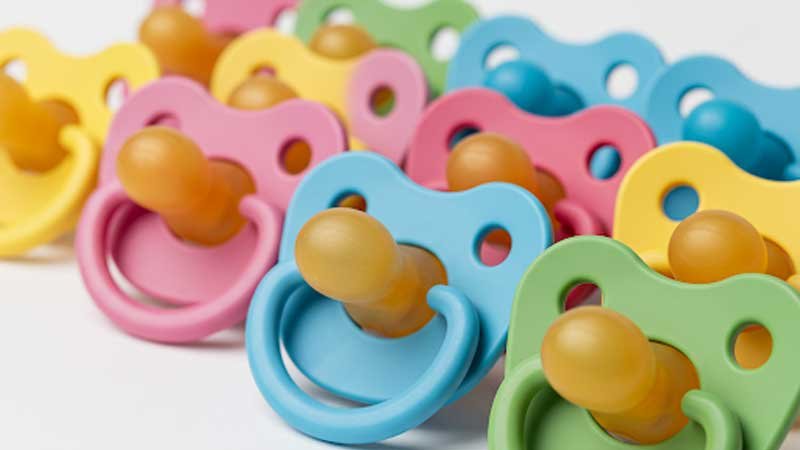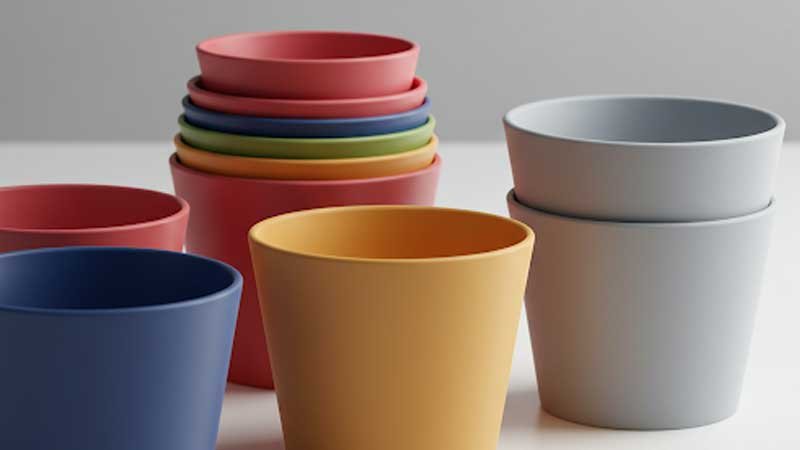You may wonder, what is food grade silicone and is it safe?
Food grade silicone has gained widespread popularity due to its impressive safety features and versatility.
In this article, we will explore the core features of food grade silicone, its compliance with safety standards, and how you can identify quality products.
What Is Food Grade Silicone?
Food grade silicone is specially made for direct contact with food. It is commonly used in kitchen tools, baby pacifiers, and other food-related items. This material is safe, non-toxic, and resistant to both high and low temperatures.
To ensure its safety, food grade silicone must meet strict international standards, such as those set by the FDA in the United States and the LFGB in the European Union. These standards ensure it does not release harmful substances or contaminate food.
What Are Core Features of Food Grade Silicone?
When choosing materials for contact with food, safety and performance are key. Food grade silicone stands out because it offers a perfect mix of both. Its properties make it an ideal choice for various kitchen and baby care products.
First and foremost, food grade silicone is safe. It meets strict food safety standards and is completely non-toxic and odorless. This means it won’t release harmful substances or affect the taste of your food. While a slight smell may be noticeable in some new items, this usually comes from leftover compounds during production and will fade after washing or airing.
Another important feature is its chemical stability. Silicone does not react with acids, bases, or salts found in everyday foods, which keeps your meals safe and unchanged.
Silicone also handles extreme temperatures with ease, from freezing cold to high oven heat. This makes it suitable for use in microwaves, ovens, dishwashers, and freezers.
In addition, it is flexible and elastic, allowing it to bend and stretch without breaking or losing its shape. Many silicone products also have natural non-stick surfaces. This is especially helpful when baking or cooking.
Cleaning is simple too. Thanks to the smooth surface, most items can be rinsed clean or put straight into the dishwasher.
Finally, food grade silicone is known for its long lifespan. It resists aging, sunlight, and moisture, so it doesn’t degrade easily. This durability makes it a smart, reliable material for repeated use in daily life.

What Are the Standards for Food Grade Silicone?
Food grade silicone must meet strict safety rules set by different countries. These standards act like a safety gate. They ensure that silicone does not pollute food, release harmful substances, or affect the taste or smell of what we eat.
The focus is on four key points: no harmful release, stable and durable structure, clean production, and traceable compliance. The most well-known global standards include the U.S. FDA, the EU’s EC Regulation, and Germany’s LFGB. Let’s go through each in detail.
United States: FDA 21 CFR 177.2600
This regulation comes from the U.S. Food and Drug Administration (FDA). It applies to silicone products that come into repeated contact with food. Common examples include silicone baking mats and seals in food machines.
Key Requirements
- Non-toxic and safe: Silicone must not release any harmful substances, even after long use or high heat.
- Migration limits: Tiny amounts of material may move from the silicone into food. This amount must stay very low. On first use, the migration must be under 20 mg per square inch. After repeated use, it must drop to below 1 mg.
Testing methods
Labs use food simulants to test silicone.
- Water (for soups or drinks)
- 3% acetic acid (for vinegar or lemon juice)
- 10% ethanol (for alcohol)
- n-heptane (for oily foods like cooking oil)
Example
The brand Silpat in the U.S. sells silicone baking mats that meet FDA rules. These mats are safe to use at 200°C and labeled as FDA Compliant.
Practical Tip
When buying silicone products, check the packaging for words like FDA Compliant or Food Safe. If unsure, ask the seller for a certificate of compliance.

European Union: (EC) No. 1935/2004
This EU regulation covers all materials that touch food, including silicone. It ensures safety and full traceability during production and sales.
Key Requirements
- No contamination: Silicone must not release harmful substances. It should not change the food’s taste, smell, or makeup.
- Migration limits: The total migration must be less than 10 mg per square decimeter. Specific limits apply to certain chemicals like siloxanes.
- Clean production: The silicone must be made in hygienic factories to avoid contamination.
- Compliance statement: Manufacturers must issue documents that prove their products passed tests. The materials and results must be clearly listed.
- Labeling: Products must say “Suitable for food contact” or show a symbol.
Example
The Comotomo baby bottle sold in Europe meets EC 1935/2004 standards. It stays safe during high-temperature sterilization, such as boiling at 100°C. The packaging includes a compliance note.
Practical Tip
Look for certification symbols on the label. Avoid very cheap imported products if they lack clear EU compliance, as they may not meet the safety standards.

Germany: LFGB
LFGB stands for the German Food and Feed Code. It is one of the strictest standards in Europe. It is often used for kitchenware and baby products made of silicone.
Key Requirements
- Sensory testing: The silicone must not affect the smell or taste of food, even after heating or long contact.
- Migration testing: Tests are more demanding than EU rules. Conditions include 200°C baking and 121°C sterilization.
- VOC limits: The silicone must not release too many volatile organic compounds (VOCs) when heated. This is especially important for oven or steam use.
- Heavy metal check: Products must not contain toxic metals like lead or cadmium.
Example
The German brand Lékué makes silicone cake molds that pass LFGB’s sensory tests. At 180°C, the mold won’t give the cake an odd taste. Packaging shows “LFGB Certified.”
Practical Tip
Products that follow LFGB rules may say “Made in Germany” or “LFGB Compliant.” These items may cost more but offer better safety and quality.

Where Can We Find Food Grade Silicone in Our Daily Lives?
Many people may wonder where food grade silicone shows up in our daily routines. Some might worry whether it’s truly safe for babies, or if it can handle the high heat of cooking or the wear and tear of daily use.
In fact, food grade silicone is widely used across many common products. It is chosen not just for safety, but also for its flexibility, strength, and resistance to both heat and cold.
The table below gives a clear overview of where this material appears in everyday life and what makes it a smart choice in each case.
| Application Area | Product Examples | Characteristics |
| Infant Products | Pacifiers, Teethers, Sippy Cups | High purity, odorless, soft, durable, safe for sterilization. |
| Kitchenware | Baking Molds, Spatulas, Mats | Heat-resistant (-50°C to 230°C), non-stick, easy to clean. |
| Food Sealing | Lids, Seals, Bottle Stoppers | Strong sealing, anti-aging, corrosion-resistant, flexible. |
| Portable Drinkware | Collapsible Cups, Straw Bottles | Flexible, impact-resistant, lightweight, cold/heat-tolerant. |
What Should You Pay Attention to When Buying Food Grade Silicone Products?
When purchasing food-grade silicone products, it’s important to first look for trusted certifications, such as FDA or LFGB, to ensure they meet food safety standards.
In addition, choose reputable brands, as well-known companies typically have stricter quality control and safety checks.
Moreover, pay attention to the appearance and smell of the product. High-quality silicone should be smooth, clean, and free from any strong odors, with only a very light scent if any.
Furthermore, always follow the usage instructions to maintain the product’s safety and performance.
Finally, be cautious of very low prices. Reliable food grade silicone products usually cost more, and extremely cheap options may be made with lower-quality materials.
Conclusion
Food grade silicone is a safe, durable, and versatile material for food-contact products. Its non-toxic nature, resistance to high and low temperatures, and ease of cleaning make it an excellent choice for many everyday applications.
If you’re looking for high-quality, custom-made silicone products, look no further. Our company has years of experience in silicone manufacturing, ensuring top-tier products tailored to your needs. Contact us today to get started on your custom order.